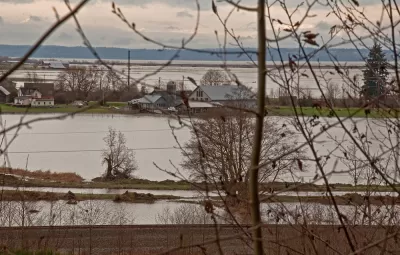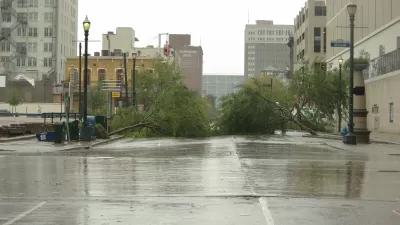Recent heavy rains and flooding have put the the U.S. Army Corps of Engineers on the defensive about its flood control policies and procedures.

Massive flooding this spring in the Midwest and beyond has put a renewed spotlight on the U.S. Army Corps of Engineers, report Manny Fernandez and John Schwartz:
Local and federal lawmakers in both parties, as well as flooded residents and their lawyers, say the Army Corps has mismanaged its waterways, allowed its infrastructure to age and crumble — the average age of the more than 700 dams it operates is 56 years — and has moved away from its flood-control mission in favor of protecting endangered wildlife as well as commercial and recreational interests.
Corps officials say they have had no choice in terms of releasing water from full reservoirs in a number of states. But homeowners and farmers dealing with the resulting flooding say that the agency should have released water earlier in the year before the rains came. Still, the Corps stands behind its flood management protocols, and officials say that some flooding needs to occur to prevent large-scale destruction.
The issue of how flooding is handled is not new, and last year the agency lost a federal lawsuit related to flood management along the Missouri River. "The judge found that a series of changes the Corps had made in the management of the Missouri River worsened flooding during more than 100 flood events from 2007 to 2014," note Fernandez and Schwartz.
FULL STORY: Army Corps Under Fire: In a Flood, It Released More Water

Planetizen Federal Action Tracker
A weekly monitor of how Trump’s orders and actions are impacting planners and planning in America.

Maui's Vacation Rental Debate Turns Ugly
Verbal attacks, misinformation campaigns and fistfights plague a high-stakes debate to convert thousands of vacation rentals into long-term housing.

San Francisco Suspends Traffic Calming Amidst Record Deaths
Citing “a challenging fiscal landscape,” the city will cease the program on the heels of 42 traffic deaths, including 24 pedestrians.

Amtrak Rolls Out New Orleans to Alabama “Mardi Gras” Train
The new service will operate morning and evening departures between Mobile and New Orleans.

The Subversive Car-Free Guide to Trump's Great American Road Trip
Car-free ways to access Chicagoland’s best tourist attractions.

San Antonio and Austin are Fusing Into one Massive Megaregion
The region spanning the two central Texas cities is growing fast, posing challenges for local infrastructure and water supplies.
Urban Design for Planners 1: Software Tools
This six-course series explores essential urban design concepts using open source software and equips planners with the tools they need to participate fully in the urban design process.
Planning for Universal Design
Learn the tools for implementing Universal Design in planning regulations.
Heyer Gruel & Associates PA
JM Goldson LLC
Custer County Colorado
City of Camden Redevelopment Agency
City of Astoria
Transportation Research & Education Center (TREC) at Portland State University
Jefferson Parish Government
Camden Redevelopment Agency
City of Claremont





























